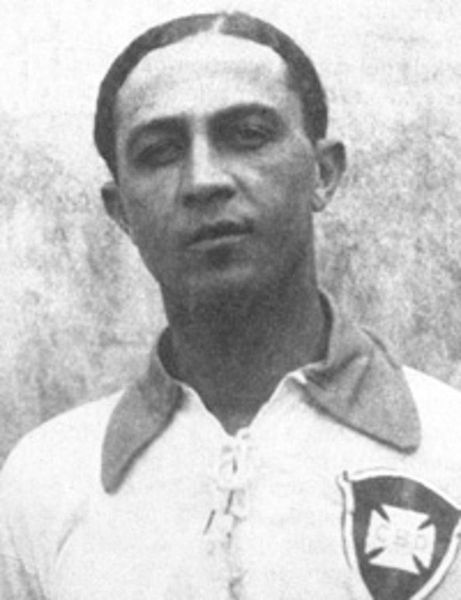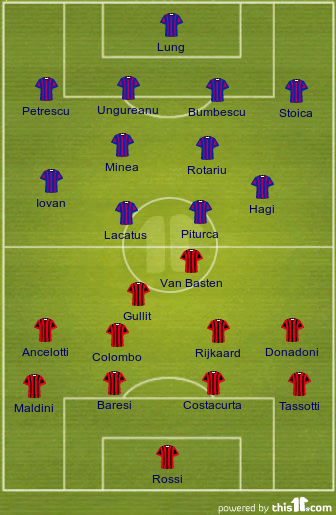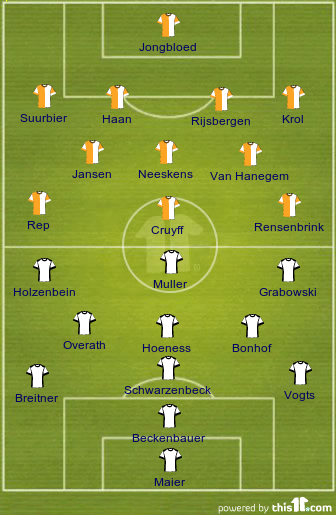Given all the success enjoyed by Brazil in the last 60 years, it is easy to believe that they have always sat at football’s top table. Such has been the degree of domination that it sometimes seems impossible to conceive that that the Selecao did not always rank among the game’s most frightening opponents, and yet for roughly half of the game’s lifetime they were far from formidable adversaries.
Football was famously introduced to Brazil by Charles Miller in 1894, but it took time to fully establish its popularity among the Brazilian people. While football is today popularly perceived as a game of the working classes, at the time (particularly outside of Britain) it was looked on as possessing a certain aristocratic cachet. For the social elites in much of the New World, anything European was considered to represent a level of refinement and sophistication that local pastimes could not rival. Football was no different.
 |
| Charles Miller |
Fluminense were founded in 1902 as a club for Rio’s upper-classes. The team’s founder, Oscar Cox, was a Brazilian of British heritage who studied in Switzerland before returning to Rio. In their first ten years of existence Fluminense won five Carioca championships, making their stadium a fashionable place for all of Rio’s aspiring aristocrats to be seen.
However, the club’s path did not run as smoothly as might have been hoped. In 1911, following a disagreement with the club’s board, the Fluminense first-team walked out on the club and approached a local rowing club to see if they might form a football team there. As a sports club without a football team, the Clube de Regatas do Flamengo might have been expected to welcome such a prestigious group of players with open arms, but some members were far from convinced. Eventually after a series of votes the footballers were admitted to the club, but the air of suspicion remained.
In the coming years the Fla-Flu rivalry became the most intense in Brazilian football history. Between the two clubs and Botafogo there was a near monopoly on the Carioca championship, to the extent that by the dawn of professionalism in Brazilian football in 1933 the three sides had 22 titles between them. Yet while Botafogo may have provided a significant challenge on the pitch, there was never the rivalry that the Fla-Flu games presented.
As the years passed a steady ascent in the standard of Brazilian football could be noted. Copa America victories in 1919 were achieved at home but proved false dawns for the Selecao, so far ahead were the likes of Argentina and Uruguay, but there was a steady stream of quality players being produced. The most notable of these was without question Artur Friedenreich, a mixed race Brazilian of German heritage who proved himself the most phenomenal goalscorer in early Brazilian history as he netted over 1,200 times. The likes of Araken and Fausto emerged in the late 1920s, but it was really in the mid-30s that a generation came about boasting world class talents such as Leonidas and Domingos da Guia.
 |
| Artur Friedenreich |
Brazil’s 1938 World Cup campaign proved that this was a coming nation and despite the isolation that WWII imposed on South America there were clearly exceptional players being produced. Ademir, Jair and Danilo all began their careers at the end of the 1930s and by the time the 1940s were underway they were maturing into outstanding players. The arrival on the scene of the prodigiously talented Zizinho at Flamengo only served to underline the bright prospects of Brazilian football.
The early parts of the 1930s saw a relative drought for Flamengo and Fluminense, but the second-half of the decade saw them back to their peak. Fluminense won Carioca championships in 1936, 1937, 1938 and 1940, with Flamengo finishing second in each of those seasons and snatching the title in 1939. This was unquestionably a power struggle for Rio supremacy.
The 1941 season was typically tight. Between them the two teams possessed most of the finest players in Brazil at the time. Flamengo could call on Domingos da Guia, Bigua, Pirillo and Zizinho, each probably the best player in Brazil in his position. Fluminense were slightly less laden with stars, but still had international keeper Batatais as the last line of defence, with an impressive forward line of Romeu, Russo and Tim, all either current or future national team members.
When the sides met at the Estadio da Gavea in 1941 it was a match that would go down in history. As the deciding game in the Carioca championship the two teams knew it was a match of critical importance. Fluminense were in the fortunate position of only needing a draw to claim the title but faced the disadvantage of being away from home. Somehow though, they used the surroundings to their advantage.
Pedro Amorim and Russo put Fluminense two goals up in the early stages as it appeared the match might turn in to an anti-climax, only for Pirillo to pull one back before half-time. The second-half saw Flamengo dominant as they continued to apply pressure to the Fluminense defence, but the Tricolores stood firm. With six minutes to go Pirillo levelled the game and from there Flamengo could sense blood. With just minutes left Flamengo knew that another goal would hand them the title.
At this point Fluminense hit upon an underhand but ingenious tactic. Flamengo’s history as a rowing club meant that their stadium was located adjacent to a lagoon. Spotting an opportunity to waste as much of the six minutes remaining as possible the Fluminense players hacked the ball off the pitch and into the nearby lake. Each time a Flamengo official provided another ball it was promptly dispatched by Fluminense to a watery grave.
 |
| Romeu of Fluminense |
One of the Fluminense players, Carreiro, was certainly sent-off, though sources vary on whether it was for continued time wasting or excessive protestations following a rejected penalty appeal. Finally, a ball retrieved from the lake fell to Romeu, and he was not one to give it away cheaply. An arduous, industrious dribble from his own half saw him fend off half the Flamengo team as he desperately sought to hold on to the ball. At long last the referee saw fit to end proceedings and hand the title to Fluminense. It may not have been won in the most sporting of manners, but in such matches an opponent’s feeling of injustice only makes the victory taste sweeter.




